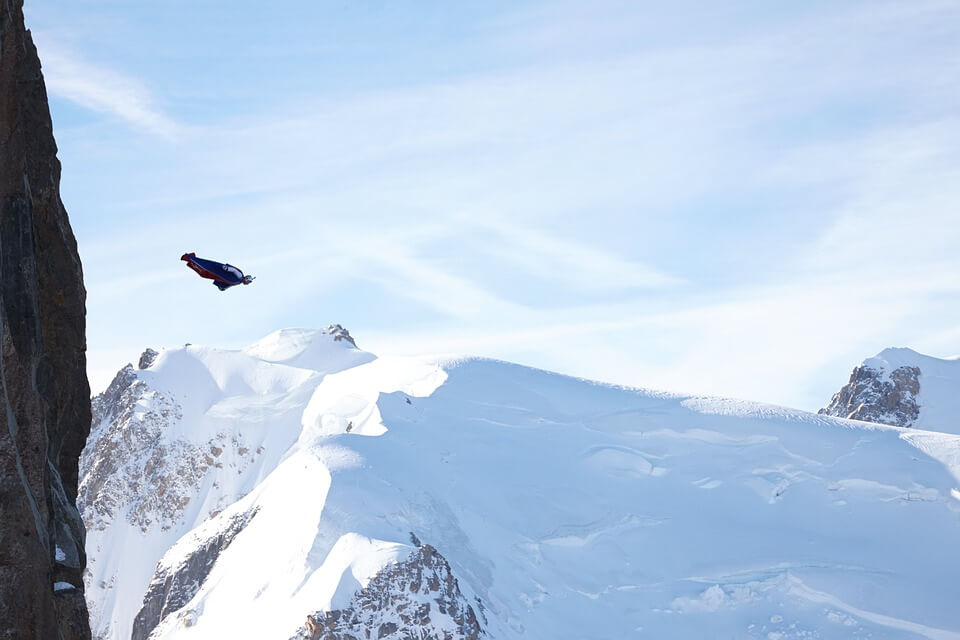When Oxford University’s Dangerous Sports Club invented bungee jumping in 1979, it set the bar for thrill-seeking activities. Adrenaline junkies from all over the world now create, try, and succeed in sports extreme enough to test the best and the bravest of athletes.
Not all extreme sports are created equal, though. Somepossessa greater fear factor, while others involve less dangerbut are nonetheless physically demanding. Doing the same thing over and over, even if it’sextreme, could get tedious,however. If you’re looking for new sports to add to your repertoire, try these five heart-pumping activities that would leave youexhilarated and wanting more.
Volcano Boarding
Some people aren’t satisfied with admiring a volcano from afar. They prefer flying down its dunes at 50 mph on makeshift metal or wooden toboggans.
This might sound plain but don’t let its simplicity fool you. Volcano boarding is an extreme sport because it entails danger — and lots of it. There’s a risk of sustaining injuries from rough volcanic ash and breathing in poisonous gases. Adding to the thrill is that when you have your back against the summit, you won’t be able to see the lava bombs flying off the crater until it’s too late.
It’s also harder to board down pumice than ice. Pumice is thicker and stickier, making it extremely difficult to negotiate turns. Why is being able to turn precisely important for this sport? A volcano’s slopes are littered with dangerous, jagged rocks, and hardened lava bombs. There simply isn’t any room for wrong turns and miscalculations when speeding down terrain like this.
Take note that not all volcanoes are ideal for surfing. People often choose a cinder cone with soft ash and gravelly slopes, like the Cerro Negro in Nicaragua and Mt. Yasur in Vanuatu. Moreover, if you want to try volcano boarding, come with the right gear.You’ll need an industrial jumpsuit and goggles to protect you from volcanic material. Prepare to hike to your starting point, as some slopes are too steep for vehicles.
Mountain Unicycling
Think that unicycling is hard? Try mountain unicycle racing for size. Also known as muni, this extreme sport involves riding a unicycle through off-road mountain terrains. Muni races work like bicycle competitions. Riders race through the course and award the first person to cross the finish line.

Muni races are not as fast as their bicycle counterpart, but they require the racer to have mastered very specificskills.Unicycling demandsgreat strength and excellent balance. You’ll also have tocontinuouslypedal on steep slopes, so you need exceptional endurance. On top of that, you face rough and jagged terrain that will test your coordination and guts.
Riders don’t use ordinary unicycles. They needgear especially designed to brave mountainous landscapes, like those with high-grip pedals, huge tires, and rugged frames.Some even havedisc brakes, with the brake levers under the saddle. Riders also wear protective gear; be sure to invest in quality helmets, gloves, and knee pads, too.
If you want to give muni a shot, you’ll need to know how to ride a unicycle with ease. Riding over speed bumps, hopping over obstacles, going backward, and idling are necessary skills. Furthermore, riding with one foot and riding while standing up should be a piece of cake.
Wingsuit Flying
Man has always been fascinated with the idea of flight. Wingsuit flyers are the daredevils who embrace the urge to fly. Wingsuit flying is a cross between skydiving and hang gliding. Riders race through the course and award the first person to cross the finish line. Riders race through the course and award the first person to cross the finish line.

Flyers jump off of a high altitude (usually an aircraft or a cliff), spread their suits, and soar through the air. Their suits’ special features allow them to descend slower than skydivers.
Wingsuit flyers don’t just fall downward; they move horizontally, too. The descent ratio is about2.5:1, meaning, they move 2.5 meters forward for every 1 meter of falling.That’s why while on the air, they can perform aerial acrobatics. Then, they deploy their parachutesand land safely on the ground.
What else is extreme about it? The 120- to 140-mph descent from altitudes as high as 20,000 ft is an exhilarating experience. And at around 25 ft above the ground, you come across trees, canyons, and other obstacles that get your adrenaline pumping.
Wingsuit flying not a sport for newbies. Keeping oneself within the safety boundaries is difficult to achieve. That’s why experts recommend at least 200 skydiving jumps before trying wingsuit flying.
Underwater Hockey
The original purpose of underwater hockey, also known as the Octopush, is to keep divers fit.The British Navy invented it in the 1950’s to improve their efficiency underwater. It then evolved into a dynamic sport enjoyed by athletes worldwide.
Its main goal is similar to that of its ice counterpart: you push a puck into the goal using sticks. Regional rules vary, but in international competitions, there are two teams of six playing members and four substitutes. The game begins with the puck at the center of the pool. Players hit the puck into their goals with 12-inch sticks.
Anyone can try it out, so long as they’re able swimmers. The catch, however, is you have to hold your breath for long periods. You need the right gear,too. The World Underwater Federation recommends large fins, a diving mask, a snorkel, and thick latex gloves.
Limbo Skating
If you think limbo isn’t challenging enough, try doing it on roller skates. Limbo skating is an extreme sport that involves whizzing under very low poleson skates. You shouldn’t touch the poles, so youneed to spread your legs apart and tilt your body close to the ground (which also shouldn’t make contact with the ground).
Perhaps due to their bodies being better at accommodating the demands of the sport, limbo skating is popular among people with small physiques—kids, above all. In fact, it’s a trend that took India by storm, with children passing under poles as low as 9 inches. Gagan Satish, a six-year-old Indian boy, could even contort his body to pass poles only7 inches high.
This sport requires great strength and flexibility. While you might not achieve a height as low as those kids do, you can still give it a whirl. Just grab a limbo pole and roller skates and practice your splits.
There are many popular extreme sportsaround that you can try out. Occasionally, though, you crave for something more unique and exhilarating. So, try your hand at these five sports. They have yet to break into the list of mainstream extreme sports, but their potential is enough to keep people interested and going back for more.
For more challenging activities, visit gearandtraining.com.

